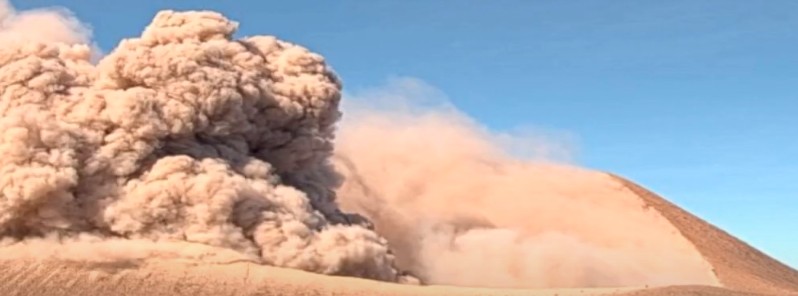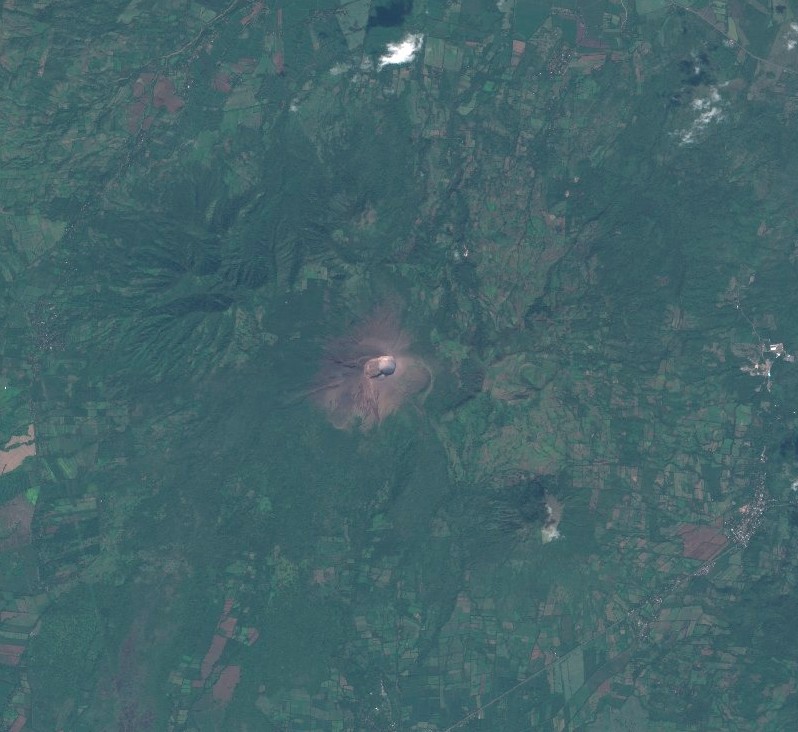At least 50 explosions in 9 hours at Telica volcano, Nicaragua

An uptick in activity has been observed at the Nicaraguan Telica volcano on Monday, November 30, 2020, with low-level ash emission and dozens of explosions at regular rates. Ashfall was reported in nearby communities, including El Panal, Cristo Rey, Los Cocos, and Los Ángeles.
At least 50 explosions were recorded within 9 hours on November 30, with a maximum height of ash between 100 and 400 m (330 – 1 300 feet) above the crater. This is about 1.5 km (5 000 feet) above sea level.
"This activity is part of the normal behavior of an active volcano and it is very likely that similar explosions will occur in the next few days," the Nicaraguan Institute for Territorial Studies (INETER) said.
Volcanic ash emissions ended by 06:34 UTC on Tuesday, December 1, and resumed at around 12:41 UTC on the same day.
At 18:31 UTC, the Washington VAAC reported constant ash emissions, moving SW from the summit.
This activity continued through the rest of the day and into December 2, although no ash was visible early Wednesday due to meteorological cloud cover.
No incandescence was observed on the webcam. However, given the recent activity level, volcanic ash emission is certainly possible, Washington VAAC noted in their advisory issued 05:39 UTC today.
Three explosions were reported at the volcano on October 29, INETER reported. The events ejected rock fragments onto the flanks and produced gas-and-ash plumes that rose as high as 1 km (3 300 feet) above the crater rim and drifted W.
Ashfall was reported in areas downwind including the communities of El Bosque, Jacinto Baca (15 km / 9.3 miles WSW), Filiberto Morales (15 km / 9.3 miles WSW), Carlos Huete, Linda Vista, and Divino Niño (31 km / 19 miles W).
Three explosions on October 30 and 31 produced gas-and-ash plumes that rose 250 – 600 m (820 to 1 970 feet) above the rim. A minor amount of ash fell on the flanks.

Telica volcano on November 29, 2020. Credit: Copernicus EU/Sentinel-2, TW
Geological summary
Telica, one of Nicaragua's most active volcanoes, has erupted frequently since the beginning of the Spanish era. This volcano group consists of several interlocking cones and vents with a general NW alignment.
Sixteenth-century eruptions were reported at symmetrical Santa Clara volcano at the SW end of the group. However, its eroded and breached crater has been covered by forests throughout historical time, and these eruptions may have originated from Telica, whose upper slopes in contrast are unvegetated.
The steep-sided cone of 1061-m-high (3 480 feet) Telica is truncated by a 700-m-wide (2 296 feet) double crater; the southern crater, the source of recent eruptions, is 120 m (393 feet) deep. El Liston, immediately SE of Telica, has several nested craters.
The fumaroles and boiling mudpots of Hervideros de San Jacinto, SE of Telica, form a prominent geothermal area frequented by tourists, and geothermal exploration has occurred nearby. (GVP)
Featured image credit: INETER

When it comes to the physics reality of our star and the Universe never argue with Jamal Shrair